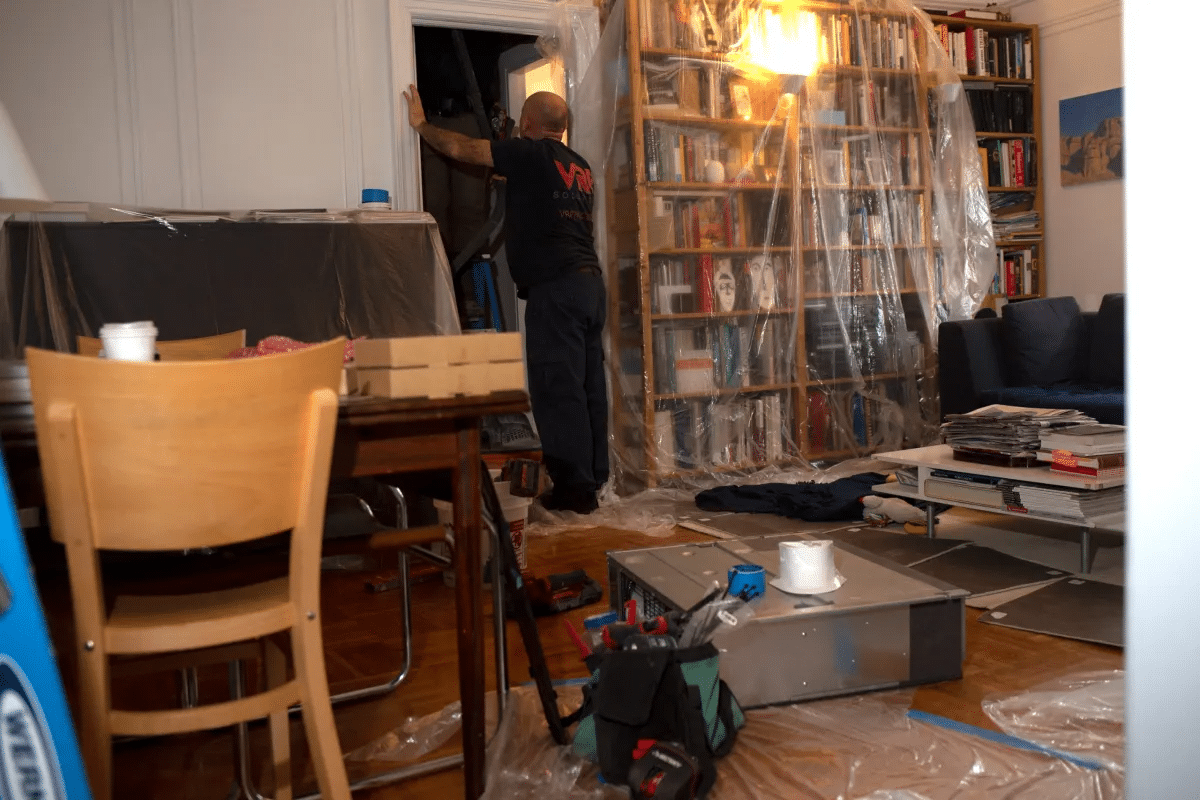Guest Post: Desecration in the Slope
We’re on vacation this week and frankly don’t plan on logging a whole lot of hours in front of the computer. So we were happy to see this ready-to-run post show up in our mailbox yesterday. Anyone else is welcome to submit this week, too. Pictures preferred. To make a long story short…On a beautiful…

We’re on vacation this week and frankly don’t plan on logging a whole lot of hours in front of the computer. So we were happy to see this ready-to-run post show up in our mailbox yesterday. Anyone else is welcome to submit this week, too. Pictures preferred.
To make a long story short…On a beautiful Park Slope brownstone block, the city owned a house: 384 Bergen, between Fourth and Fifth Avenues. It apparently had been taken for back taxes owed, the city then gave it to a community development group, the 5th Avenue Committee, to renovate for housing. This took many years. Now the renovation is complete, and the building sits empty, collecting garbage. It was developed using typical city housing projects specifications: it appears to have been stripped of details inside, the entry is aluminum sash, corridors have fluorescent 2×2 lighting fixtures, bright yellow high intensity parking lot style fixtures in back. What is the future of this building? Will the future residents have an interest in its context? What will it take to get public agencies to be more sensitive, or at least: first do no harm?









since i can’t help myself from writing one last thing: affordable housing in one brownstone on bergen street is exactly NOT concentrating poverty. and programs that convey individual, formerly-abandoned buildings to private owners are different from programs that build public housing. in new york, these are two separate agencies: housing preservation and development (HPD) for the former, the housing authority (NYCHA) for the latter. HPD pretty much stays out of the building after the rehab is done, whereas NYCHA manages the property. and, unlike in chicago, baltimore, philadelphia, detroit, etc., projects in NYC are not being torn down–in fact they’re in pretty good shape. and one reason (of many) is that they’re not all clustered in one part of the city, they’re all over.
I guess Anon 3:27am likes the look of garbage on public streets. Go figure.
OH NO GARBAGE IN PARK SLOPE SOMEONE CALL THE YUPPIE POLICE!!!!
O.K. 🙂
i’m anonymous at 4:06–i didn’t mean so much to contradict second street as to say that “limiting extras” and “calling for the destruction of details” were different things. but, even so, the decision is made for finacial reasons and so that buildings renovated with city money are not luxury homes.
if you think that all policy decisions should be made based on economics, it is indeed about the dollars and cents. but another school of thought might be that it’s important to provide a safety net for the poor, even if it costs additional money, and that we as a society will reap long-term benefits by providing for the poor–housing as well as education, child care, job training, food stamps, etc.–and trying not to segregate the poor in urban ghettos.
To Anonymous, August 17, 4:06pm, according to the post by Second Street, August 16, 6:35pm: “I’m a former employee of the City’s department of housing – I can tell you that they do strictly limit the “extras” in any project on former City land – including, sadly, fancy lighting abd historical fixtures.” Your posts cannot both be correct on this topic, but I don’t know who is accurate.
To clarify a couple of things. 1) The City disposes of many, if not most, foreclosed properties through an auction process to the highest bidder (check DCAS website). 2) The vast majority of City-owned properties going to non-profits for nominal fees are located in distressed or semi-distressed communities (ex. E. New York). 3) The policy of turning over City property in this way has proven to be an effective way to remove government from its inefficient role as landlord (the City now owns around 8,000 foreclosed properties from around 100,000 in 1990), revitalize ailing neighborhoods that need an infusion of people and rehabilitated buildings (ie. areas the market wouldn’t touch – think Columbia St in the late 1980s, early 90s), and help address housing needs for low income New Yorkers, who by the way, also fill thousands of low paying jobs that help NY thrive.
All of which is to say the Slope property is an anomaly and shouldn’t be used to diss City policy as a whole. Agreed, from a pure dollar and cents perspective, this may not be the best use of taxpayer cash, but perhaps the costs of concentrating poverty may be just as great in the long run.
NYC housing regs to do not call for historic details to be destroyed, but they do call for costs to be kept down to save you, the taxpayer, money. restoration, as we all know, can be quite expensive.
so either:
you’re building luxury apartments for poor people–the injustice!
OR
you’re cutting costs on park slope homes and ruining their architectural heritage–the injustice!
it’s hard to win.